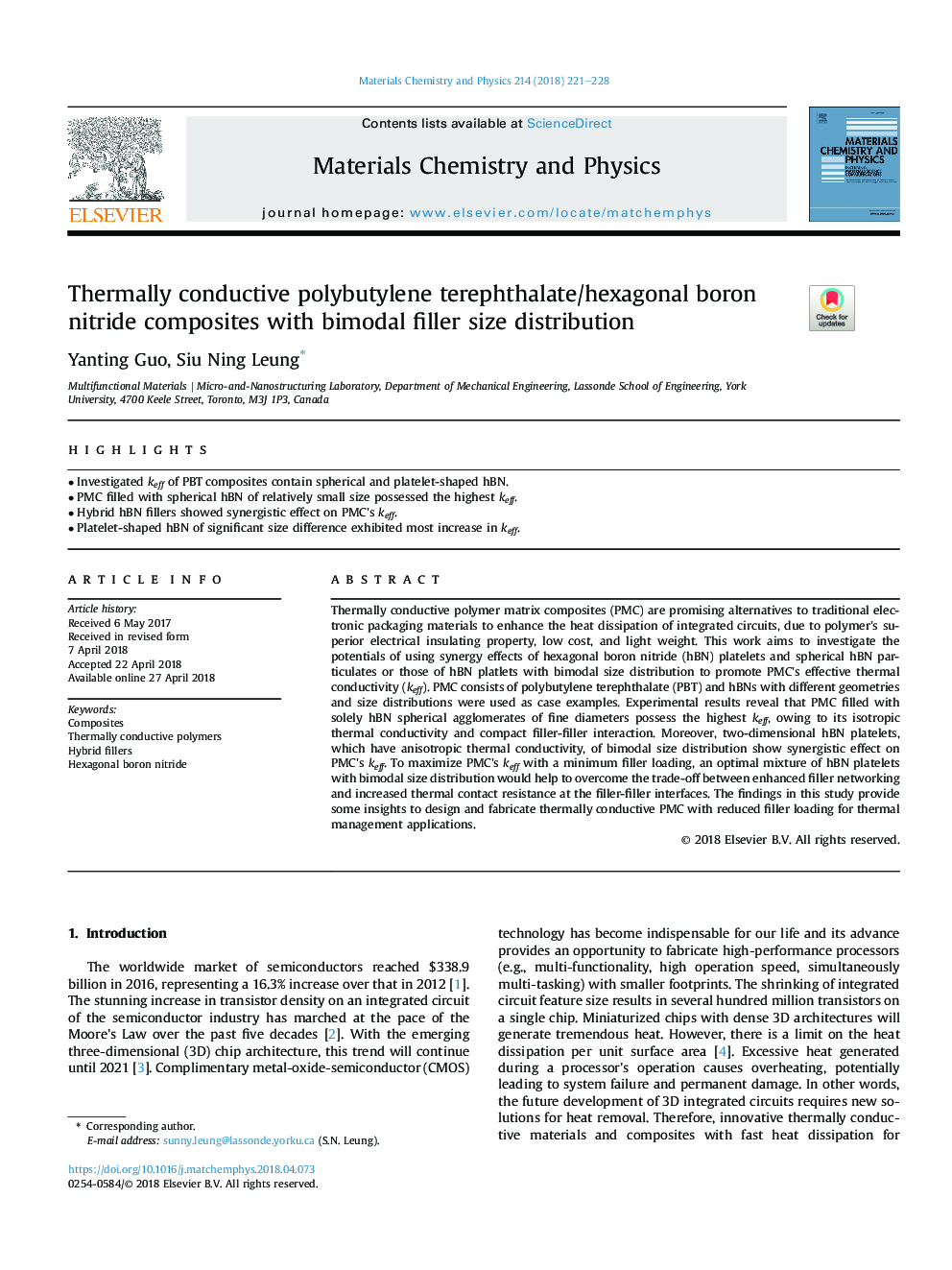| Article ID | Journal | Published Year | Pages | File Type |
|---|---|---|---|---|
| 7921481 | Materials Chemistry and Physics | 2018 | 8 Pages |
Abstract
Thermally conductive polymer matrix composites (PMC) are promising alternatives to traditional electronic packaging materials to enhance the heat dissipation of integrated circuits, due to polymer's superior electrical insulating property, low cost, and light weight. This work aims to investigate the potentials of using synergy effects of hexagonal boron nitride (hBN) platelets and spherical hBN particulates or those of hBN platlets with bimodal size distribution to promote PMC's effective thermal conductivity (keff). PMC consists of polybutylene terephthalate (PBT) and hBNs with different geometries and size distributions were used as case examples. Experimental results reveal that PMC filled with solely hBN spherical agglomerates of fine diameters possess the highest keff, owing to its isotropic thermal conductivity and compact filler-filler interaction. Moreover, two-dimensional hBN platelets, which have anisotropic thermal conductivity, of bimodal size distribution show synergistic effect on PMC's keff. To maximize PMC's keff with a minimum filler loading, an optimal mixture of hBN platelets with bimodal size distribution would help to overcome the trade-off between enhanced filler networking and increased thermal contact resistance at the filler-filler interfaces. The findings in this study provide some insights to design and fabricate thermally conductive PMC with reduced filler loading for thermal management applications.
Related Topics
Physical Sciences and Engineering
Materials Science
Electronic, Optical and Magnetic Materials
Authors
Yanting Guo, Siu Ning Leung,
